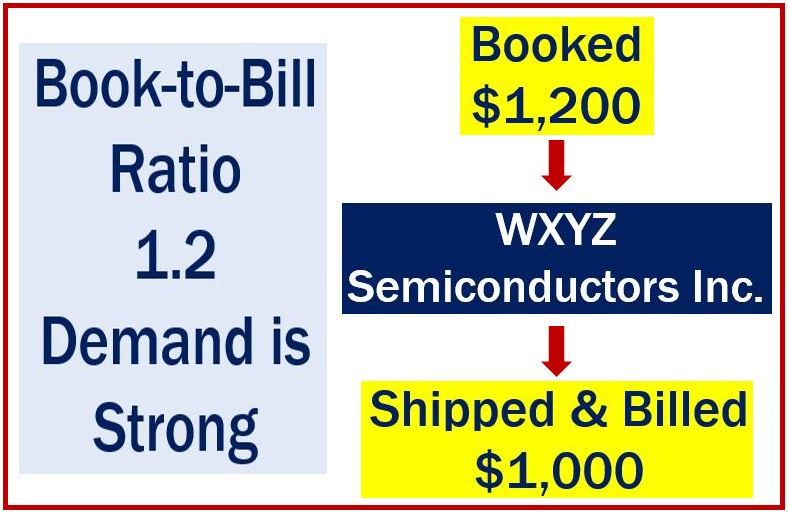Book-to-bill ratio – definition and meaning
The book-to-bill ratio is the ratio of orders a company receives to the total it shipped and billed. We always calculate the ratio over a certain period, which is usually one-quarter or one month. The terms BO/BI ratio and BB ratio mean the same as book-to-bill ratio.
The semiconductor manufacturing industry uses this metric widely. Marketers see the SME ratio as a key leading indicator of demand trends. SME stands for semiconductor manufacturing equipment.
If the ratio is greater than one, it means that the company received more orders than it delivered and billed. In other words, there is strong demand. A ratio of smaller than one, on the other hand, points to weak demand.

For example, let’s imagine that WXYZ Semiconductors received orders worth $1,200 for every $1,000 it shipped and billed. Therefore, the book-to-bill ratio was 1.20. In other words, demand was exceeding supply by twenty percent.
SEMI’s book-to-bill ratio publication
The Semiconductor Equipment and Materials Institute (SEMI) publishes a monthly book-to-bill ratio. The publication covers three-month average bookings and billing figures for North American semiconductor equipment companies.
Even though the publication just covers North America, it is a reliable indicator of the global market.
A SEMI report informed that North American semiconductor equipment manufacturers registered $1.51 billion in orders globally in June 2015. During the 3-month average period, there was a book-to-bill ratio of 0.98. In other words, companies received $98 in orders for every $100 they delivered and billed.
June’s figure was 2.6% lower than in May, but 3.5% higher than in June 2015.
Denny McGuirk, President and CEO of SEMI, said:
“The June book-to-bill saw slight declines in the three-month averages for both booking and billings compared to May. Both figures, however, are above the trends reported one year ago and the first half of the year has been one of positive growth.”


